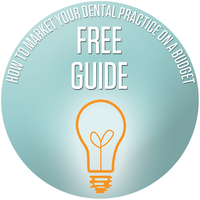
Visiting the dentist can be a daunting experience for anyone. There are many sights and sounds during the average dental appointment. For individuals with autism spectrum disorder (ASD), it can be particularly challenging. Sensory sensitivities, communication difficulties, and anxiety can all make dental visits overwhelming.
As a dentist, your role in supporting patients with autism spectrum disorder (ASD) is not just important. It's crucial. Your understanding and accommodation of their unique needs can significantly improve their dental experience and contribute to their overall well-being. ASD affects an estimated 1 in 44 children aged eight and over five million adults. Your efforts can make a world of difference in their lives.
By taking steps to understand and accommodate their unique needs, you are not only improving their dental experience but also playing a significant part in their overall well-being. Accredited dental schools in the U.S. were not required to teach their students how to care for patients with developmental disabilities or unique healthcare needs up until 2019. However, your efforts can make their experience at your practice more comfortable and stress-free, leading to better oral health and overall well-being.
So, how can you start helping dental patients with autism spectrum disorder? We will explore practical and easy techniques that you can easily incorporate into your practice. These techniques are designed to provide the best care possible without adding to your workload or feeling overwhelmed. With these tools, you can confidently support your patients with ASD and enhance their dental experience.
Key Takeaways:
- Visiting the dentist can be challenging for individuals with autism spectrum disorder due to sensory sensitivities, communication difficulties, and anxiety.
- Preparing patients with ASD and their families for dental visits is essential.
- Clear, straightforward language and visual aids can enhance understanding and make communication more effective.
- Allowing the patient to take breaks and providing sensory input tools can make the experience more comfortable.
- Anxiety-relieving medications or light sedation can be administered before the visit to help the patient. Dental exams and treatments can be conducted in some specialized centers under general anesthesia.
- Encouraging a consistent dental care routine at an early age can help prevent oral health problems typically encountered in people with ASD, such as bruxism, tongue thrusting, erosion, and dry mouth.

Prepare the patient in advance.
Your role in preparing patients with ASD and their families for dental visits is essential. Before the patient comes in, you can send the parent or caregiver an initial intake form. It may also be worth getting medical records to review before the visit.
On the day of the visit, talk to the patient about what to expect. This can significantly reduce their anxiety. You can include details about the procedure, the tools and equipment used, and any potential discomfort or pain they may experience. A visual schedule or social story can also help prepare the patient for their visit. You want to show that you are invested in their comfort and well-being.

Create a calm and sensory-friendly environment.
The environment in your clinic can profoundly impact the comfort of patients with ASD. An easy place to start is by scheduling the visit for a time when the office is less busy or even after hours if you can accommodate.
Creating a calm and sensory-friendly environment in your clinic can profoundly impact the comfort of patients with ASD. Simple adjustments like dimmer lights, soothing music, and diffusing calming scents can significantly reduce their anxiety and make the visit more comfortable, enhancing their overall dental experience.

Use clear and straightforward language.
Communication is a challenge for individuals with ASD. This can manifest as issues with social peer interactions, poor eye contact, and difficulty reading facial expressions.
Using clear and straightforward language can enhance your patients' understanding. Explain the procedure and give instructions that avoid jargon or complex vocabulary. Visual aids such as pictures or diagrams can also be valuable tools in your communication.

Allow for breaks and sensory input.
Patients with ASD may need breaks during their visit to help them regulate their sensory input. Allowing the patient to take breaks as needed can help reduce anxiety and make the experience more comfortable. Sensory input tools can also be beneficial. For example, weighted blankets provide deep pressure and help calm anxiety by giving a sense of security. Fidget toys can also help redirect sensory input, giving patients a focus and reducing their stress levels.

Anxiety-relieving medications and anesthesia.
Even with exceptional accommodations, children and adolescents with ASD may still have trouble during dental evaluations or procedures. Before the visit, anxiety-reducing medications or light sedation can be administered to help the patient. In addition, dental exams and treatments can be conducted under general anesthesia in some specialized centers when necessary.

Build a relationship with the patient and their family.
Take the time to get to know the patient and their interests. This can create a more positive and enjoyable experience. For instance, if you see the patient enjoys a particular type of music, you can play it during their visit to help them relax. This individualized touch can go a long way in making the patient feel more comfortable and at ease.

Encourage their home dental hygiene routine.
Typical oral health problems encountered in people with ASD include bruxism, tongue thrusting, erosion, and dry mouth. Additionally, studies have indicated that children and young adults with ASD show a high prevalence of dental caries and gum disease. So, starting a dental care routine at an early age is crucial.
It will be up to the parent to make the routine consistent. It should include brushing twice a day for two minutes minimum each time. Having the child and parent brush simultaneously or take turns brushing can be helpful as a demonstration and an activity. Flossing may be challenging, but the parent can help model the activity again.
Parents can combine toothbrushing with other daily routines like bathing. Alternatively, they can try a soothing activity like lying on a soft carpet or bed with a visual distraction.
Assorted toothpaste flavors and non-foaming options if the child has a taste or texture sensitivity. Many toothbrushes are also available, including spinning or battery-powered models for children who enjoy vibration.
Supporting patients with ASD requires not just professional skills but also patience, understanding, and a willingness to adapt to their unique needs. Your dedication to their comfort and well-being is truly commendable. Rest assured, your efforts are not in vain. Incorporating these tips can help make dental visits a more positive and stress-free experience for your patients, leading to improved oral health and overall well-being.
For more tips on how to best help your patients, get your free guide to easing patients with dental anxiety.
Want to join the Solstice network? Connect with our dedicated provider relations team for more information about joining our network. You can call 1.877.760.2247 or email providerrelations@solsticebenefits.com.
Already in the Solstice network? Search to see if you're part of the Solstice dental PPO or HMO network. You can also go to https://www.mysolstice.net/ or call us at 1.877.760.2247.



